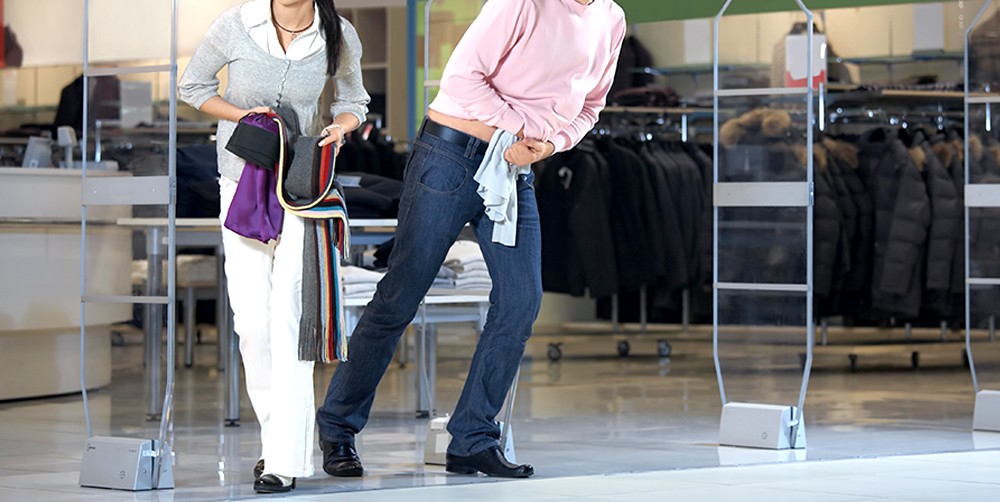
Organized Retail Crime continues to rise
An astounding 97 per cent of retailers say they were impacted by Organized Retail Crime (ORC) in 2019, losing over $700k per $1 billion in sales.
These are the findings of the National Retail Federation (NRF) in their 2019 Organized Retail Crime Survey, which also indicated the tactics used by ORC gangs are becoming more violent.
Here’s an insight into Organized Retail Crime in the past 12 months and how retailers can address the ongoing problem.
The key findings
Now in its 15th year, the NRF Organized Retail Crime survey involved 63 of the nation’s retailers in a bid to help measure the impact of ORC and understand evolving tactics to fight the ongoing challenge.
Released on December 11, 2019, the most recent survey found 97 per cent of retailers had been victimized by ORC in the 12 months prior, with respondents indicating they lost $703,320 per $1 billion in annual sales volume due to ORC activity.
This is the fourth consecutive year the cost of ORC has topped $700k, with over two thirds (68 per cent) of the retailers surveyed also noting they had seen a rise in ORC activity during 2019.
A quarter of those responding further indicated that rise had been “significant”, and 68 per cent felt gangs had become more violent and aggressive in the past year.
Announcing the findings, NRF Vice President of Loss Prevention Bob Moraca noted Organized retail crime continued to present a serious challenge to the retail industry.
“These criminal gangs are sophisticated, but so are retail loss prevention teams. Retailers are committing more resources and constantly evolving their tactics to fight this ongoing challenge,” he said.
Types of ORC
Organized Retail Crime occurs both in-store as shoplifting and in the supply chain.
The report noted popular strategies used by ORC gangs included stealing merchandise in-store and then returning it for a refund of merchandise credit or gift cards. These credits are then sold for cash in a variety of venues.
Loss prevention teams most often recover these stolen credits from websites, but also found them in pawn shops, check cashing stores and other venues.
Meanwhile, the supply chain is also commonly targeted for theft, offering ORC gangs the opportunity to steal a larger quantity of items for a greater return.
Almost three quarters (73 per cent) of retailers indicated they’d been a victim of cargo theft in the past 12 months.
- 59 per cent said the crime occurred en route from the distribution center to the store
- 33 per cent indicated it happened at the distribution center
- 30 per cent indicated it occurred en route from one store to another
- 24 per cent said it happened at the store
- 22 per cent said it happened on route from the manufacturer to the distribution center
Merchandise commonly targeted

Designer clothing topped the list as the merchandise most commonly targeted by ORC gangs, but there was also a mix of other high value and low value items.
The most frequently stolen items were:
- Designer clothes – 25 per cent
- Infant formula – 16 per cent
- Razors – 16 per cent
- Designer handbags – 15 per cent
- Laundry detergent – 15 per cent
- Denim pants – 13 per cent
- Energy drinks – 11 per cent
- Allergy medication – 10 per cent
- High end liquor – 10 per cent
- Teeth whitening strips – 8 per cent
- Pain relievers – 8 per cent
- Cigarettes – 7 per cent
- Deodorant – 7 per cent
- Laptops/tablets – 7 per cent
- Weight loss pill – 7 per cent
The response
Retailers are responding to the ORC rise in a number of ways, with 65 per cent of respondents indicating they prioritized ORC more than they did five years ago.
Over half (56 per cent) said they were allocating additional technology to fight the trend while 44 per cent noted they are increasing their loss prevention budgets.
Their prime strategies also included changing the store policy. Almost a third (30 per cent) have revised their return policy, and a further 8 per cent plan to alter it in the future.
Sixteen per cent have changed their Point of Sale policy, while 21 per cent plan to amend this in the future.
Sixteen per cent have also altered their staff screening procedure, and 11 per cent plan to change this in the future.
A further 16 per cent have revised their trespass policy, with eight per cent plan to amend it in the future.


